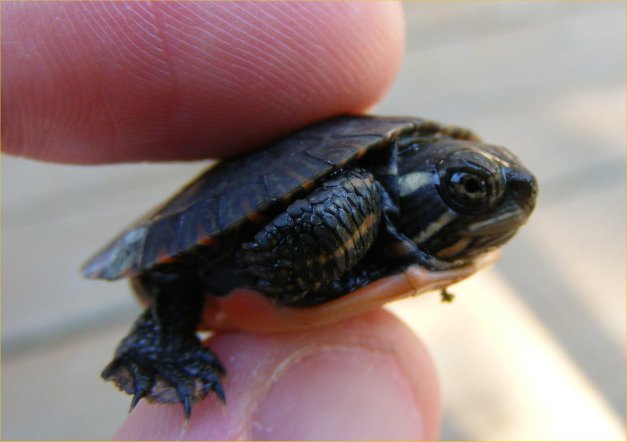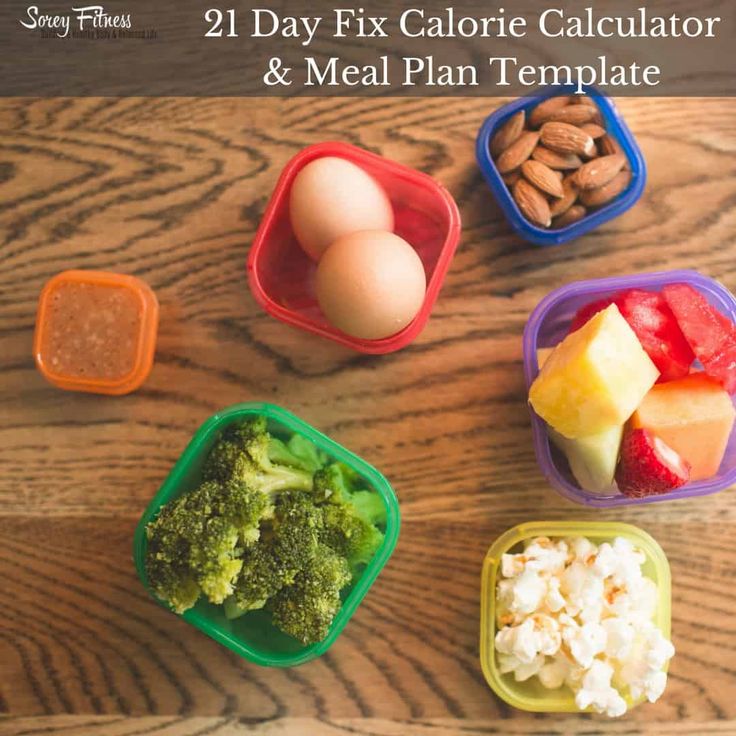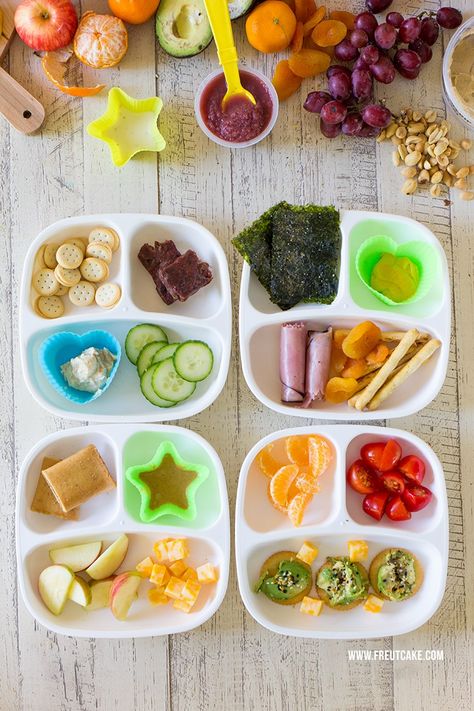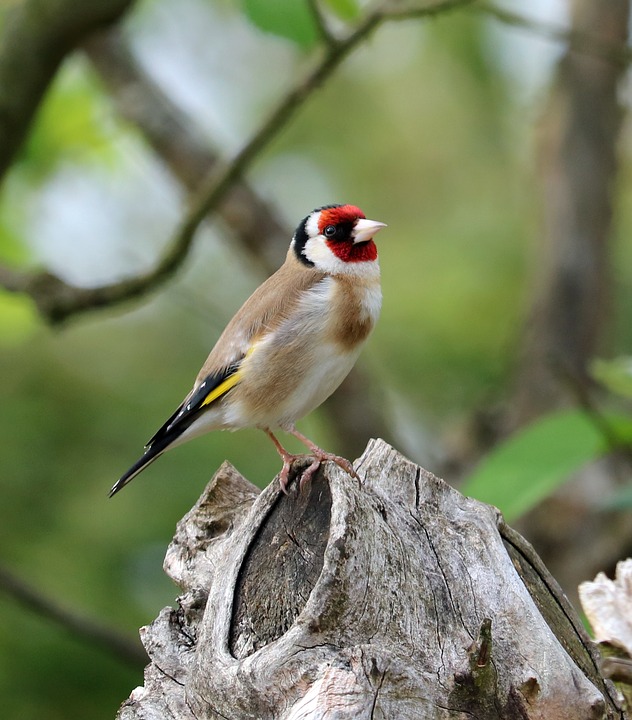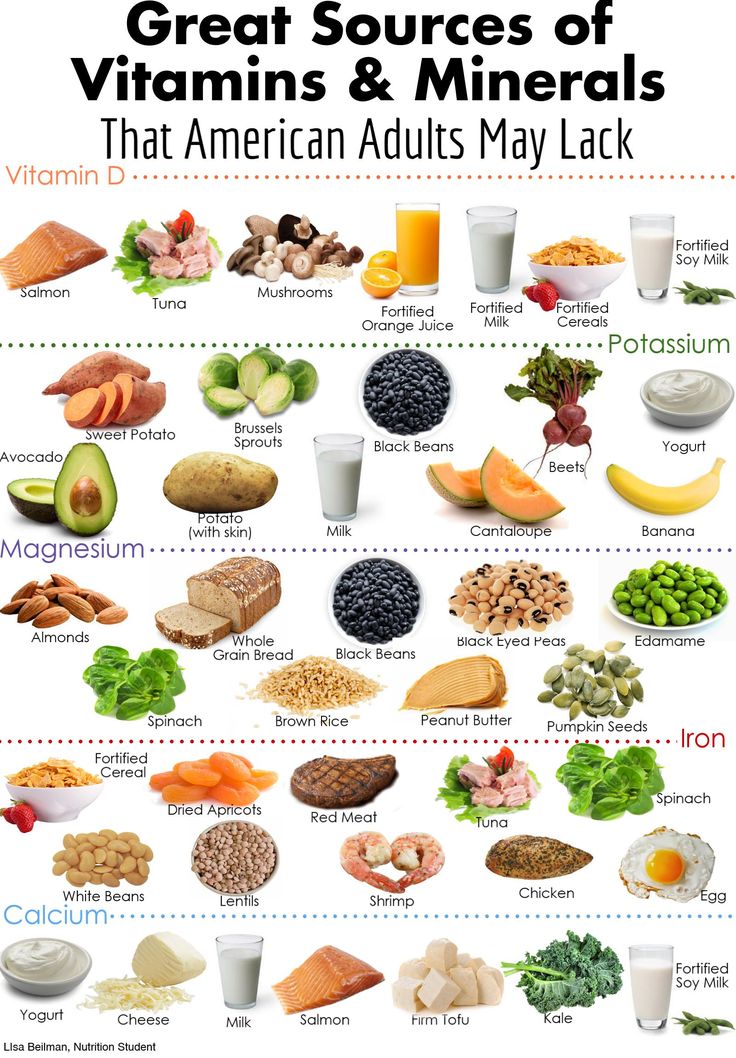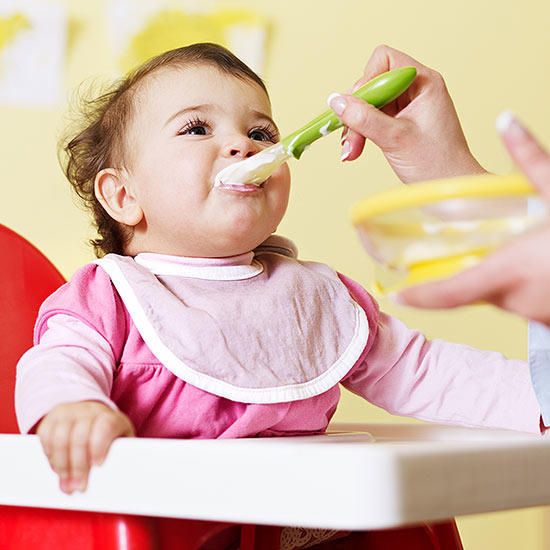What food do baby turtles eat
What Do Baby Turtles Eat in the Wild and As Pets?
Slow-going turtles that live in an aquarium and can be just as fun to watch as cats and dogs. Like most reptiles, they are fairly easy to maintain. They live for a long time, especially when you feed them right.
As a turtle mom or dad, you may want to make sure your baby turtle is eating the right kinds of food, or feed them a diet as similar to a wild turtle as possible. We’re going to cover what baby and adult turtles eat in the wild and also what you can feed them as pets, depending on your preferences.
What Wild Turtles Eat
Image Credit: Nature_Blossom, PixabayTurtles are found on every continent in the world except Antarctica. You will likely spot a turtle along the bank of a small pond, stream, or lake. They love damp areas with lots of rocks or spaces they can hide. This means that they like to eat things you can find in these areas.
Wild turtles eat a variety of things in nature. When they are babies, they mostly eat meat because they need the protein to keep growing. Types of protein they like to eat include small insects, snails, worms, and fish. When they get bigger, they can start eating more and more plant-like substances.
What Pet Turtles Eat
What your pet turtle needs for nutrition depends on the species and age of your turtle.
Omnivorous vs Carnivorous vs Herbivorious TurtlesThere are three kinds of turtles; carnivorous turtles are rarer and eat only meat, omnivorous turtles are more common and eat meat and vegetation, and herbivorous turtles eat only vegetation. Box turtles, Mississippi maps, and red-eared sliders are omnivorous and common pet turtle breeds. Musk turtles are carnivorous.
What Do Adult Pet Turtles Eat?
Image Credit: SeaReeds, PixabayJust like in the wild, a turtle’s diet needs to change as they age. It’s important to know how old (approximately) your turtle is so you know what to feed him.
Pet turtles that are mature and omnivorous can eat pelleted food specifically made for turtles. You can find this kind of food at most pet stores. Again, check the species to make sure you are giving your turtle the right diet.
You can find this kind of food at most pet stores. Again, check the species to make sure you are giving your turtle the right diet.
Most turtles do well on pellet food containing between 40-45% protein and 6-8% percent fat. The moisture content counts too: the higher moisture content in the food, usually the higher percentage of protein and fat inside the food. Look for “fish meal” towards the top of the ingredients list.
Turtle-specific pellets should make up at least 25% of your turtle’s diet. It’s important to get food specific for turtles as it stays intact more easily when it contacts water, and it also floats.
The rest of your turtle’s diet should be 25% from a protein source, like a comet goldfish, which also provides essential nutrients like calcium and phosphorus.
The final 50% can be made up of fruits and vegetables. Vegetables should be rich with colors, such as dark, leafy greens, shredded squash, and carrots. You could also opt to feed your turtle aquatic plants like duckweed.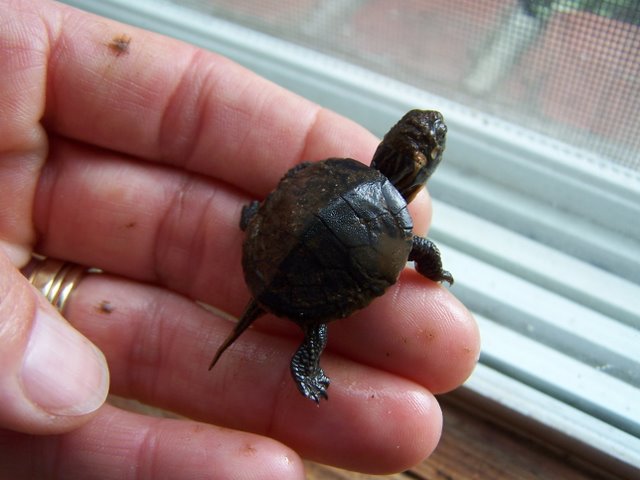
Occasionally you can offer meat, but this is not always beneficial. Turtles benefit most from the nutrient livers of feeder fish, and won’t get much of what they need from the kind of meat we normally eat.
Herbivorous turtles, like land turtles or tortoises, can be fed only fruits and vegetables. Aim for 20% fruits and 80% vegetables total.
Related Read: 10 Best Turtle Foods 2021 – Reviews & Top Picks
What Baby Pet Turtles Eat
Image Credit: PixabayBaby turtles in the wild eat from different food sources sometimes because they are growing. In general, you should feed a baby turtle a little more protein than you would an adult turtle. You can replace some fruits and veggies with a little more pellets and feeder fish if your turtle is still growing.
Pellets are a great option here, but you could opt to feed him live food instead. Baby turtles can eat the same kinds of proteins adults can: earthworms, snails, slugs, grasshoppers, beetles, and crayfish. Ask your local pet store if they have live food for reptiles, and this is where you can buy it.
Ask your local pet store if they have live food for reptiles, and this is where you can buy it.
One thing you might want to consider adding to your pet baby turtle’s diet is a gel capsule supplement. You can find these at most pet stores. Just make sure the label indicates that it’s for your specific breed of turtle.
Ultimately, you want to make sure what you feed your baby turtle has variety. That way, you know he is getting all the nutrients and vitamins he needs.
Is It Okay to Keep a Wild Turtle?
Generally, no. For one, turtles in nature are wild animals. They are not used to human interaction, and will therefore not make very good pets. Wild turtles could carry diseases that captive-bred turtles don’t have (though both can carry some, which is why you should always wash your hands after handling). Lastly, some states ban captivating wild turtles. It’s frowned upon by conservationists, as well. These are all the reasons it’s not a good idea to keep a wild turtle.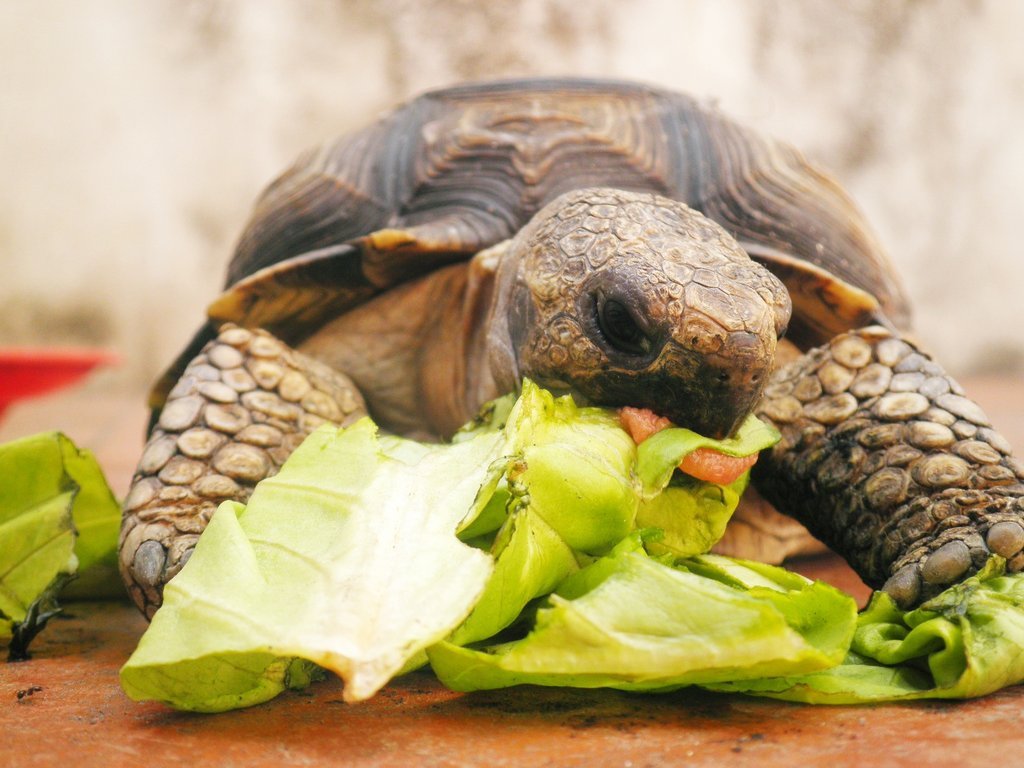
- Here’s another interesting read about turtles: 17 Turtles Found in Illinois
Baby Turtle Care Tips
Image Credit: PixabayFeed them in a separate aquarium to keep your main habitat clean. Alternatively, you can sprinkle pellet food on top of their water. Whatever you feed them, make sure it’s shredded into small pieces to make it the easiest to eat.
Turtles eat every day when they are young. Once they are about 7 years old, you can feed them once every 2 days. They can be fed 1 cup of turtle food per day, or whatever amount they can eat in around 20 minutes.
Never feed your turtle cat or dog food, as the protein content is too high and could harm your turtle.
- Here’s another topic of interest: Can Turtles Eat Chicken? What You Need to Know!
Baby turtle’s diet needs differ slightly from adult turtles, just like in the wild. They require a little more protein and rely more on essential nutrients than full-grown adults, and that’s about the only difference. When it comes to feeding a baby turtle a pellet diet or live food, the choice is up to you.
When it comes to feeding a baby turtle a pellet diet or live food, the choice is up to you.
Looking for more information on turtles? Take a look at:
- How To Take Care Of A Turtle Egg: A Beginner’s Guide (with Pictures)
- Do Turtles Need a Heat Lamp at Night? Lighting Guide For Your Pet Turtle
- How Many Babies Do Turtles Have? How Many Eggs Do They Lay?
Featured Image Credit: Gauthier Pous, Pixabay
What Do Aquatic Turtles Eat?
The following content may contain Chewy links. PetMD is operated by Chewy.
Aquatic turtles kept as pets are typically more difficult to care for than most pet parents realize. Turtles should eat a variety of commercially available turtle pellets (which includes required protein for their health) in addition to live food and a variety of vegetables. Turtles can even enjoy the occasional fruit or treat!
Each individual turtle’s diet should be thoroughly considered and researched based on the natural diet of the species and in coordination with a reptile veterinarian.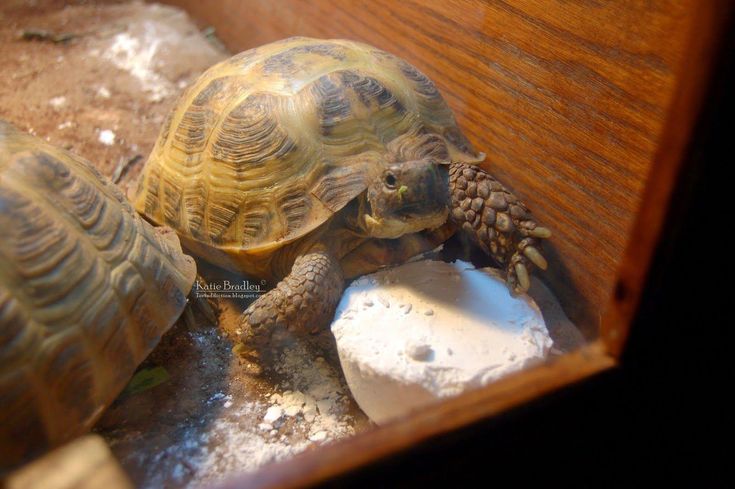
Foods for Turtles
Most semiaquatic and aquatic turtles, like red sliders, painted turtles, and pond turtles, are omnivores, which means they eat a combination of animal protein and vegetables. Some species, such as the spiny soft-shell turtle, are considered carnivorous and eat primarily animal protein. Typically, aquatic turtles eat more animal protein when they are young and more veggies as they get older. It’s important to continue to evolve your turtle’s diet as they age.
Carnivorous turtles should eat a mixture of multiple commercially produced turtle pellets in addition to live animal protein. Omnivorous turtles should also receive the pellet mix, as well as approved vegetables and plant matter. The typical ratio of foods for an adult omnivorous turtle include:
What Do Turtles Eat?
Adult turtles should be offered food every two to three days, while juveniles typically eat daily. Many companies offer commercially available pellets for aquatic and semiaquatic turtles.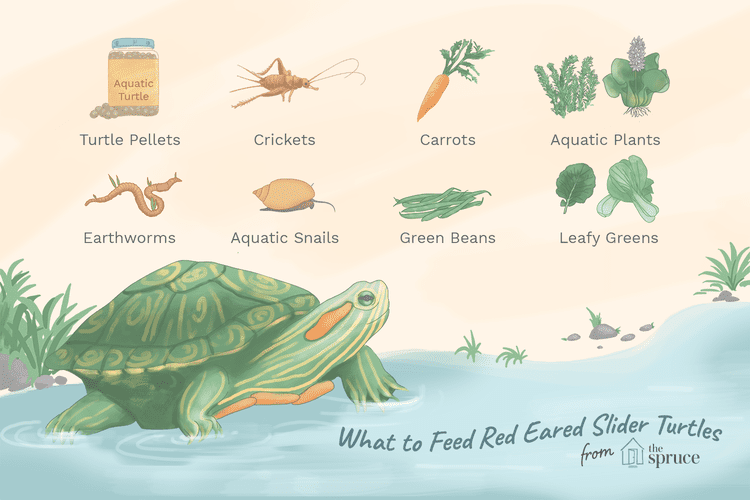 It is essential to rotate different brands of pellets, so your turtle is exposed to multiple varieties. By switching brands, or combining 4-5 different brands at once, pet parents are more likely to meet the turtle’s nutritional needs for vitamins, minerals, and macronutrients. This will ensure a strong, healthy, and long-lived turtle! Common commercial diets include:
It is essential to rotate different brands of pellets, so your turtle is exposed to multiple varieties. By switching brands, or combining 4-5 different brands at once, pet parents are more likely to meet the turtle’s nutritional needs for vitamins, minerals, and macronutrients. This will ensure a strong, healthy, and long-lived turtle! Common commercial diets include:
-
Aquatic Turtle Formula, by Fluker Farms
-
Aquatic Turtle Diet, Mazuri
-
Reptomin Floating Food Sticks, by Tetra
-
Natural Aquatic Maintenance Formula Turtle Food, by Zoo Med
-
Gourmet Aquatic Turtle Food, by Zoo Med
Adult turtles should also receive a vitamin and calcium supplement sprinkled on their diet two to three times a week. There are many brands of supplements available—make sure to use one labeled for turtles or reptiles. Talk to your veterinarian to determine which brand most appropriately meets your turtle’s needs.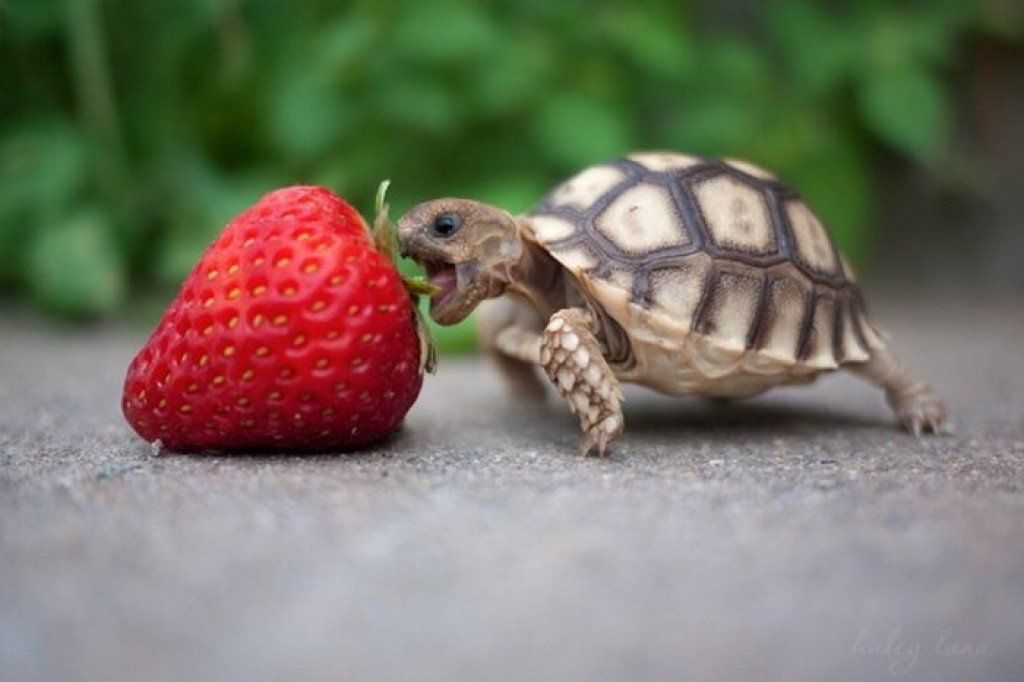 Turtles may even enjoy calcium blocks or cuttlebone to chew on to increase their calcium intake and to help keep their beaks trim. Remove any uneaten food from the water, as the waste can contaminate it.
Turtles may even enjoy calcium blocks or cuttlebone to chew on to increase their calcium intake and to help keep their beaks trim. Remove any uneaten food from the water, as the waste can contaminate it.
Turtles, like most animals, enjoy treats from time-to-time. Treats should never make up more than 5% of their overall diet and include:
-
Commercially available aquatic turtle treats
-
Dog or cat kibble
-
Fruits, such as banana, melon, apples, and berries
-
Insects, live or freeze-dried
What Vegetables Can Turtles Eat?
Nutrition plays a crucial role in keeping aquatic and semiaquatic turtles healthy. Vegetables are often underutilized but should make up most of the adult omnivorous aquatic turtle’s diet. Just like with turtle pellets, it is crucial to offer a wide variety of dark, leafy greens in addition to other vegetables. A turtle should never eat the same vegetables their entire life. Instead, offer 2-3 types of greens each feeding and 1-2 types of other veggies. Each week or two, rotate through the options below to keep your turtle healthy and happy. Highly nutritious vegetable sources for turtles include:
A turtle should never eat the same vegetables their entire life. Instead, offer 2-3 types of greens each feeding and 1-2 types of other veggies. Each week or two, rotate through the options below to keep your turtle healthy and happy. Highly nutritious vegetable sources for turtles include:
What Live Food Can Turtles Eat?
Live food is important to provide protein for both carnivorous and omnivorous aquatic turtles. Carnivorous turtles will eat a higher percentage of live protein in addition to a variety of pellets. Dead fish should be removed from the aquarium immediately, as they can spread disease. Feeder fish should be the primary live food offered, but others can be used occasionally. Common live prey items include:
-
Feeder fish, such as goldfish, guppies, bait minnows, and smelt
-
Insects, such as earthworms, waxworms, mealworms, and bee moth larvae
-
Shellfish
-
Brine shrimp
-
Slugs
-
Snails
What Fruits Can Turtles Eat?
Some turtles may enjoy fruit occasionally as well.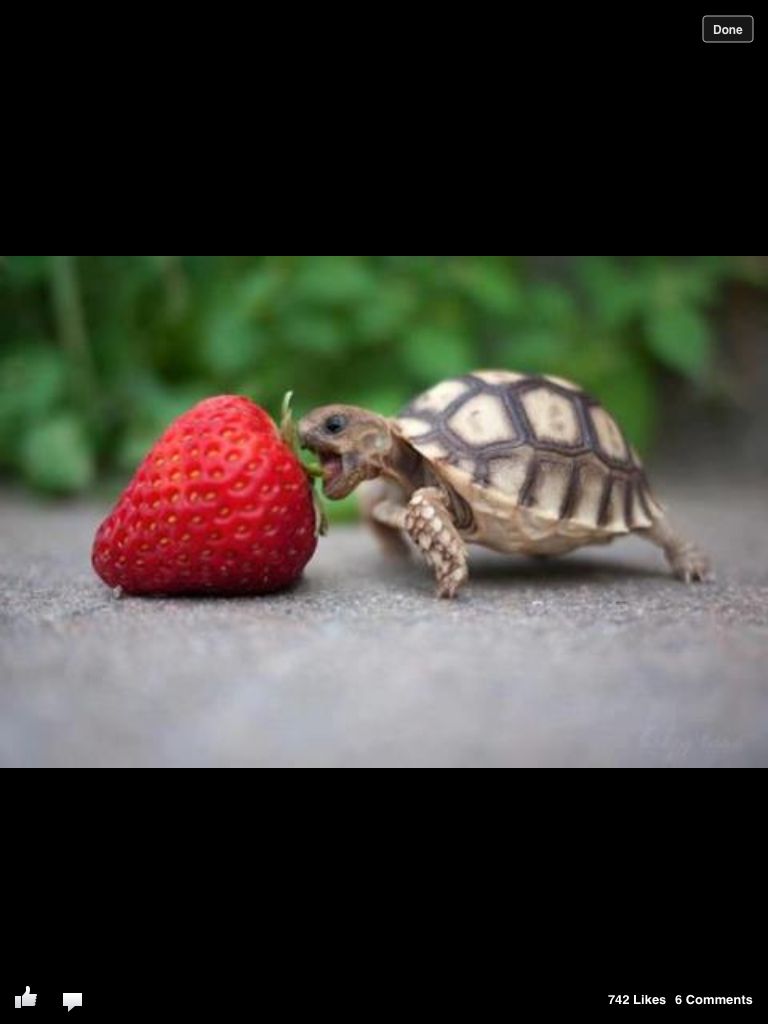 Fruit should be offered raw. Cut or shred any fruits to help with swallowing and prevent choking. To help keep a turtle’s beak trim, you can offer pieces of cantaloupe with the rind still attached. Some common turtle favorites include:
Fruit should be offered raw. Cut or shred any fruits to help with swallowing and prevent choking. To help keep a turtle’s beak trim, you can offer pieces of cantaloupe with the rind still attached. Some common turtle favorites include:
- Apple
- Melon
- Berries
- Banana
- Grapes
- Oranges
What Can Turtles Not Eat?
There are a variety of items and foods that should never be placed in an aquarium with an aquatic turtle:
-
Frozen vegetables can be used occasionally, but not as a staple vegetable. They are deficient of essential vitamins, and frequent feeding can result in long-term illness in your turtle.
-
Frozen or freeze–dried fish are often deficient in essential vitamins and should not be fed.
-
Earthworms and other insects from your yard should not be offered, as they may introduce bacteria, pesticides, or parasites to your turtle.
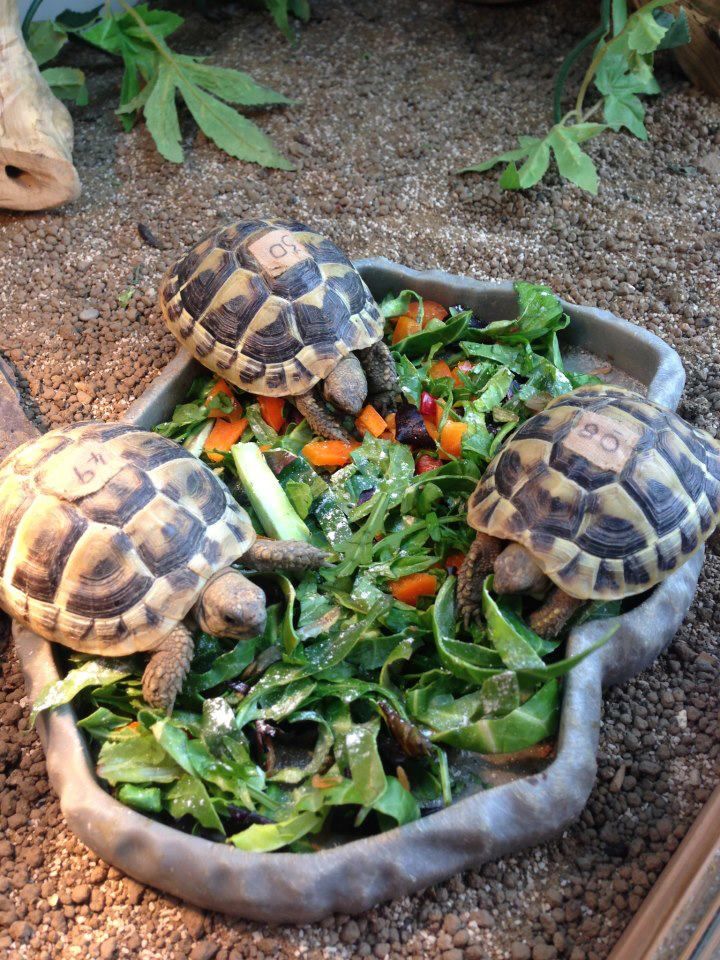
-
Dog or cat food can be okay to give as an occasional treat but should never be used as a main diet staple.
-
Raw chicken or beef should not be offered as they commonly contain foodborne disease.
-
Avocados
-
Toxic plants, like amaryllis and some ferns
-
Fake plants, which may confuse the turtle and cause accidental ingestion
References
-
Pollock DVM, DABVP, Christal. Lafeber.com Care of Aquatic & Semiaquatic Turtles.
-
Horton DVM, Susan. Chicago Exotics Animal Hospital. General Care of Aquatic Turtles.
-
Morris, Paula. Chelonia.org Basic Care - Water Turtles. 2005.
-
Kaplan, Melissa. Anapsid.org. Red-Eared Sliders. 1994.
Featured Image: iStock.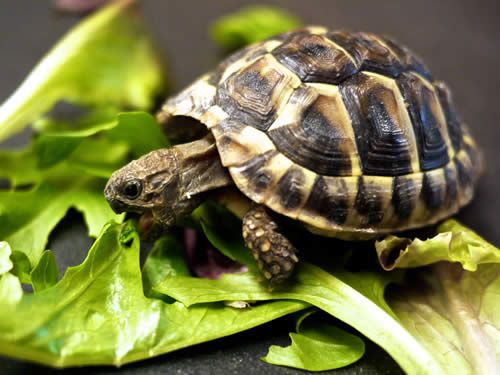 com/talitha_it
com/talitha_it
Help us make PetMD better
Was this article helpful?
How and what to feed red-eared, marsh and other aquatic turtles
Aquatic ornamental turtles are frequent inhabitants of home aquariums. These cute reptiles are very fond of children and adults. In order for the turtle to live a long and fulfilling life in a closed tank, you need to create appropriate living conditions for it and pay special attention to the right diet.
In this article, we will look at popular brands of complete food and treats for aquatic turtles, how many times a day, at what time and how to feed them correctly, whether turtles need mineral and vitamin supplements, differences in the diet of adults and small pets, as well as depending on from the type of turtle.
Features of feeding aquatic turtles
Aquatic turtles eat plant and animal food. During the period of growth and formation of the body, turtles need food rich in protein. Natural products can be added to the diet in combination with ready-made dry food designed specifically for aquatic turtles.
Natural products are served to turtles in small pieces. A single portion is determined so that in a 30-minute snack, the turtle can completely eat the entire piece of food served. For young reptiles, 2-3 pieces of 1 cm3 are usually enough, and for feeding adult turtles, the size of the pieces should be slightly increased. If after a snack there is a half-eaten piece in the aquarium, the portion can be reduced at the next feeding.
A few more important rules for feeding aquatic turtles:
- natural food should be thermally processed before feeding the reptile;
- food served must be at room temperature;
- food can be placed in the aquarium in a special feeder located on the ground in order not to pollute the water;
- feeding with tweezers is allowed;
- To create a balanced diet, you can combine prepared food with natural food.
Overview of artificial food for turtles
Dry food is recommended not as a main food for aquatic turtles, but as a supplementary food that goes well with natural food.
Dry food for aquatic turtles offers a wide range of products from different world manufacturers. We will briefly review the types of artificial food and other healthy treats for pet reptiles.
Complete dry food
Complete dry food can be given to baby and adult turtles every day. The composition of such a product includes useful components of plant and animal origin, selected taking into account all the requirements of the reptile's body.
Popular brands:
- Sera;
- Zoomir;
- Tetra ReptoMin;
- Dajana.
Treats
Non-complete feeds are classified as Treats. They can only be given to adult turtles and no more than once a week.
Popular treats:
- JBL Tortil;
- Tetra ReptoDelica Snack;
- Sera Raffy Royal;
- Zoomir "Tortila M" Strong shell, etc.
Vitamin-mineral complexes
At home, turtles cannot get all the trace elements necessary for their body, which they extract in the natural environment. So that the reptile does not get sick and feels good, it must be periodically fed with special vitamin and mineral supplements. You can buy ready-made complexes in pet supply stores.
So that the reptile does not get sick and feels good, it must be periodically fed with special vitamin and mineral supplements. You can buy ready-made complexes in pet supply stores.
Vitamin and mineral supplements for turtles:
- MIX – mineral supplement with calcium;
- MIX - general strengthening supplement;
- mineral block "Tortila";
- Beaphar Turtle Vitamin - vitamin complex;
- FIORY Tarta Vigor - feed supplement with vitamins;
- mineral block Ca+D3 "Tortila M";
- Sera vitamins;
- Dajana – mineral stone for aquatic turtles.
Adult tortoise and small pet diet
The diet of aquatic turtles must be combined - natural food in combination with artificial food. Consider what foods can and cannot be given to aquarium reptiles.
Useful and harmful natural products for aquatic turtles:
- You can give low-fat river fish in crushed form with chopped bones.
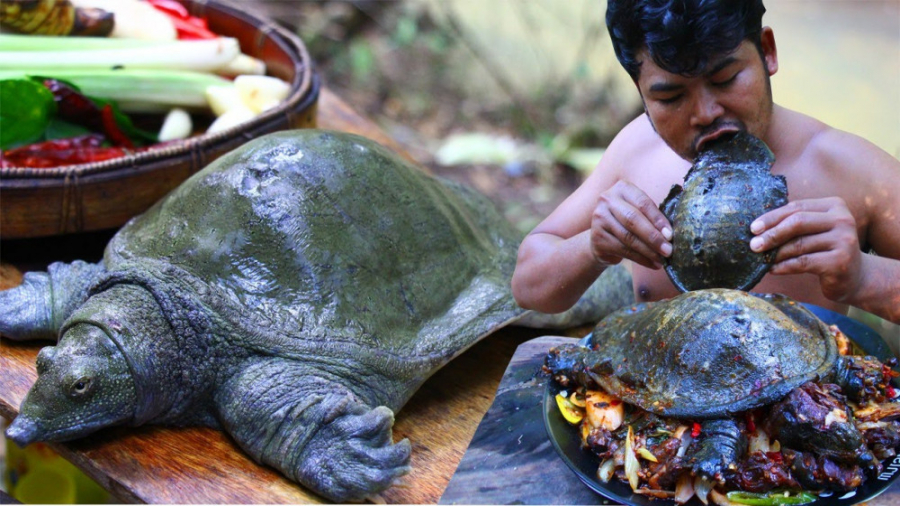 You can not feed turtles with bony and oily fish.
You can not feed turtles with bony and oily fish. - May be fed with live gammarus and small crustaceans.
- Raw shrimp and crabs are allowed.
- Turtles should not be fed squid, although they love them very much.
- It is strictly forbidden to give reptiles the meat of terrestrial animals and factory meat products (sausages, canned food, etc.). The digestive system of reptiles does not absorb such food.
- Occasionally, you can treat the turtle with pieces of beef heart and liver. These products feed the body with vitamin A.
- It is allowed to feed the reptile with food mice and frogs.
- Turtles can be given natural plant foods such as carrots, lettuce, apple pulp, herbs, sprouted oats and barley.
- Non-poisonous grassland plants, as well as algae and some types of aquatic plants, can be included in the diet.
- Limited pieces of pear, watermelon, melon, banana, apricot and raspberry are served.
- Do not give turtles citrus fruits, nuts, soybeans, beans, cabbage, bread, flour products, cereals, fish waste, dairy products, chicken eggs.

- Foods high in phosphorus, stromagenic substances and oxalates are harmful to reptiles.
- With pleasure and benefit, turtles eat various insects and larvae living in the water. They can be fed with coretra, bloodworms, locusts, crickets, fly larvae, earthworms and moths. The insect must first be decapitated. Can be given dried, frozen, or live.
- Live and thawed mollusks, land snails, snails, marizas, etc. are well absorbed by the reptile organism. But it is better not to treat a turtle with slugs without shells.
Turtle menu specifics depending on their species
Water turtles are more often predators, so the basis of their diet is food of animal origin. If your aquarium has a semiaquatic or marsh reptile that prefers vegetarian food, the diet will be based on plant foods. In any case, the nutrition for the turtle must be balanced and varied so that the body of the domestic reptile fully receives all the necessary substances and trace elements.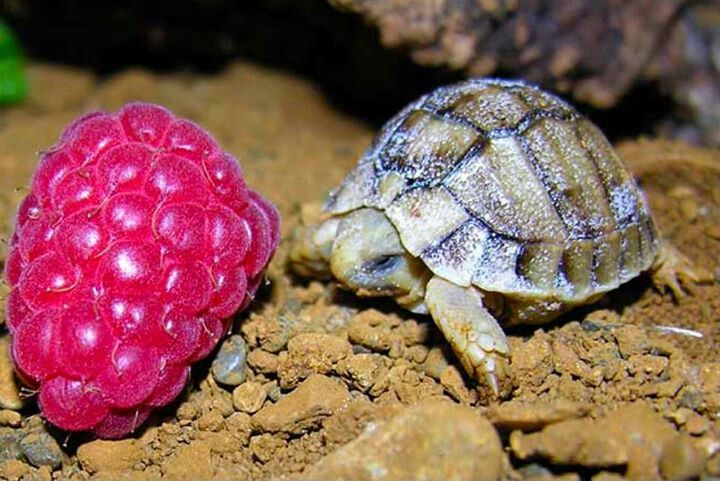
Features of the diet of turtles of different species:
- The red-eared turtle prefers fry, small fish with bones, insect larvae, chicken fillet, gammarus and shrimp. From plant foods, you can give apples, lettuce and slices of fresh cucumber.
- Chinese amphibian Trionix enjoys beef liver, heart, lean fish, fry and small frogs. From plant foods, she will like fresh herbs and slices of tomato.
- The European bog turtle loves lean meats, fish with small bones, and plant foods.
- Musk turtle prefers to feed on algae, fish and aquatic insects.
How often and at what time to feed the turtles
It is recommended to feed the turtle at the same time. The first three years of life they are fed once a day, mainly food of animal origin. As they grow, the need for such food is lost, so plant foods and dry food become the main part of the diet.
Adult turtles are fed once every 2-3 days. In summer, turtles eat more often, but in small portions, and in winter they may not eat for several days, and then gladly absorb the increased portion. In the cold season, it is recommended to add vitamin and mineral supplements to the turtle's diet.
In the cold season, it is recommended to add vitamin and mineral supplements to the turtle's diet.
After the turtle has been fed, the remains of food are removed from the aquarium. In the subsequent feeding, fresh food is served. You can not feed the reptile with spoiled foods, they can cause poisoning of the body.
Major Owner Mistakes
Beginning pet turtle owners often make feeding and diet mistakes that can cause serious health problems for the reptile.
The most common owner mistakes are:
- feeding the turtle food from his table - salty, fried, smoked and seasoned dishes are very dangerous for the body of turtles;
- regular feeding with vitamin and mineral supplements - such complexes should not be given to turtles more than once a week;
- make up an unbalanced diet, for example, they regularly treat a reptile with fish, forgetting about the need to feed other healthy foods, which leads to an excess of vitamin B and a lack of other trace elements in the body.

These are the most common mistakes in feeding domestic aquatic turtles, as a result of which reptiles develop various health problems.
The following symptoms testify to improper feeding of the tortoise: coordination of the movement of the reptile is disturbed, it refuses to eat, shows lethargy, and motor activity decreases. An unbalanced diet of small turtles leads to improper development of the body and growth retardation. To eliminate such health problems for the turtle, make up a healthy and balanced diet for it!
Never try to treat a water turtle yourself. If there are certain symptoms that indicate an unhealthy condition, seek the help of a veterinarian specializing in the treatment of domestic reptiles. An experienced specialist will also tell you in detail how and what to properly feed waterfowl aquarium turtles.
Proper nutrition is the key to a healthy and long life of a domestic reptile!
What to feed tortoises at home, what not to feed
Most species of tortoises eat plant foods. Therefore, if such a turtle is kept at home, then you need to be very careful about its diet. People who faced a debilitating problem began to keep special food journals for their pets:
Therefore, if such a turtle is kept at home, then you need to be very careful about its diet. People who faced a debilitating problem began to keep special food journals for their pets:
- daily;
- weekly;
- monthly.
As a rule, the menu is prepared in advance, with planning for every day. This takes into account all the necessary vitamin supplements, in the form of calcium and various amino acids. If you purchased a turtle, and you don’t know how to feed it, then for a start you should at least make a preliminary planning of its diet. In the process of feeding, it will become clear how to adjust her nutrition. In order not to take risks, it is better to seek information from a specialist or “dig” on the Internet, where there is a lot of useful information.
It is very important that nutrition is optimal and balanced. The turtle should not be overfed, but should not be allowed to starve. Her diet should include foods rich in essential vitamins and minerals in order to ensure normal development and growth for the pet.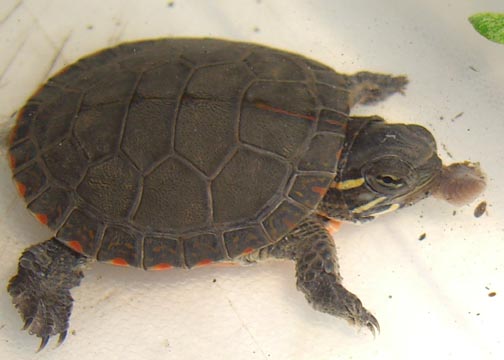
If the turtle eats a lot of different foods, this can negatively affect the health and longevity of the pet. As a result of overeating, the turtle can develop diseases of the liver and gastrointestinal tract.
With insufficient food, the turtle will not receive the required amount of nutrients, which can lead to developmental defects.
Although tortoises eat mostly plant foods, care should be taken to ensure that the tortoise also consumes animal foods. It can be no more than 5% of the total diet, but this is quite enough for its normal development.
Those who do not know how to feed this animal can purchase special artificial supplements with vitamins, proteins and other trace elements. How many such additives are required to the main diet is indicated on the package.
A complete list of permitted plants and vegetables can be found here.
Contents
- 1 Turtle diet
- 2 Should turtles be fed
- 3 What do turtles eat in their natural habitat?
- 4 What should not be fed to tortoises?
- 5 Turtle diet in winter and summer
- 6 In addition
Turtle diet
- Greens - 75%;
- Fruits, berries and vegetables - 15%;
- Complex dishes in the form of various cereals - 5%;
- Vitamin supplements - 5%.
In formulating her diet, one must take into account the fact that certain substances, such as vitamin D 3 , can adversely affect her health. You should carefully study the list of substances prohibited for land turtles.
It should be remembered that in animals that enter captivity, there is a shift in her behavior. With a lack of nutrients, she will begin to eat everything, including the earth in the terrarium. To prevent this from happening, you should take great responsibility in organizing the nutrition of your pet.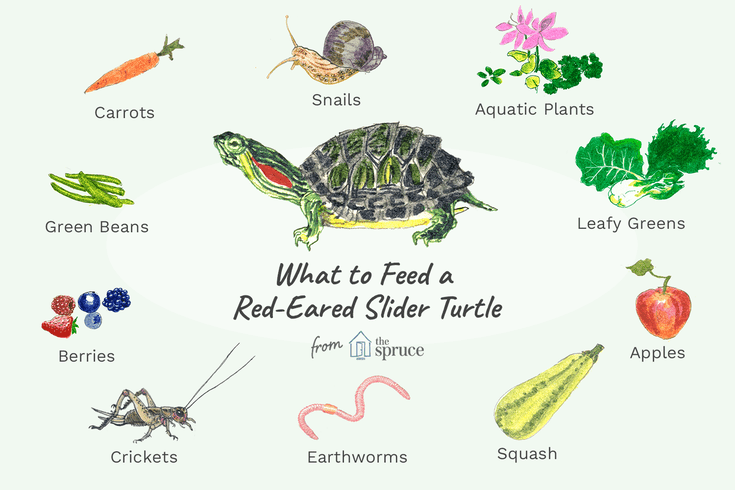 With proper and balanced nutrition, the turtle will delight others for many years.
With proper and balanced nutrition, the turtle will delight others for many years.
Therefore, before you start feeding an animal, you should make an approximate diet:
- As mentioned above, the basis of the diet is greens, in the form of lettuce and dandelion leaves, plantain and alfalfa, thistle and sorrel, lawn grass, as well as leaves and stems of legumes (peas or beans). In addition to this greenery, turtles are happy to eat inflorescences of various plants. The main component must always be in the feeder, and the reptile will decide how much to eat.
- Vegetables are in second place. Turtles love to feast on pumpkin, fresh carrots, ripe zucchini, young beets and radishes. Once a month, the turtle can be given a cucumber or horseradish.
- Apples and pears must be included in the list of berries and fruits . From time to time, apricots, plums, raspberries, strawberries, and watermelon can be included in the diet, but in small quantities.
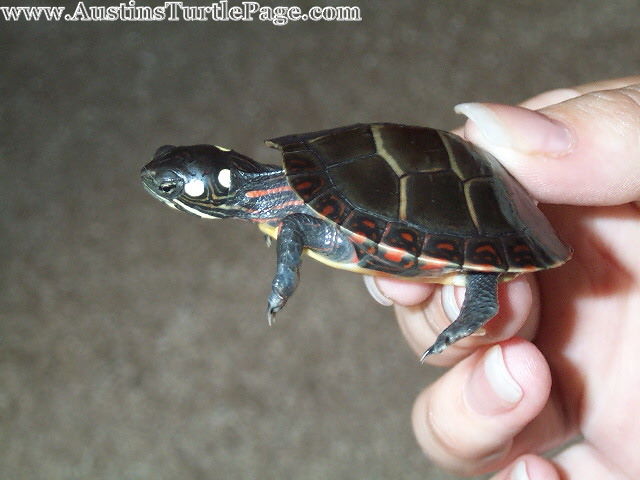
Is it necessary to water the turtle
As a rule, tortoises get the main dose of moisture from vegetables, fruits and greens. Most experts say that it is enough to provide the turtle with a bath of water once a week and it will not suffer from a lack of moisture. The fact is that turtles are able to replenish the lack of water through the skin. If a turtle swims in a bowl of water for 10 minutes, then this is quite enough for her.
There are cases when, after acquiring a turtle, this small animal still suffers from a lack of moisture. In such cases, for some time you should provide the turtle with daily baths with water. Water should be poured up to half of the body so that the head peeks out of the water. To this end, at first, you can install a drinker with clean water so that the turtle can drink at any time.
What do turtles eat in their natural habitat?
The diet of tortoises consists of plant foods. Being in natural conditions, the turtle consumes all the necessary nutrients that ensure its normal development.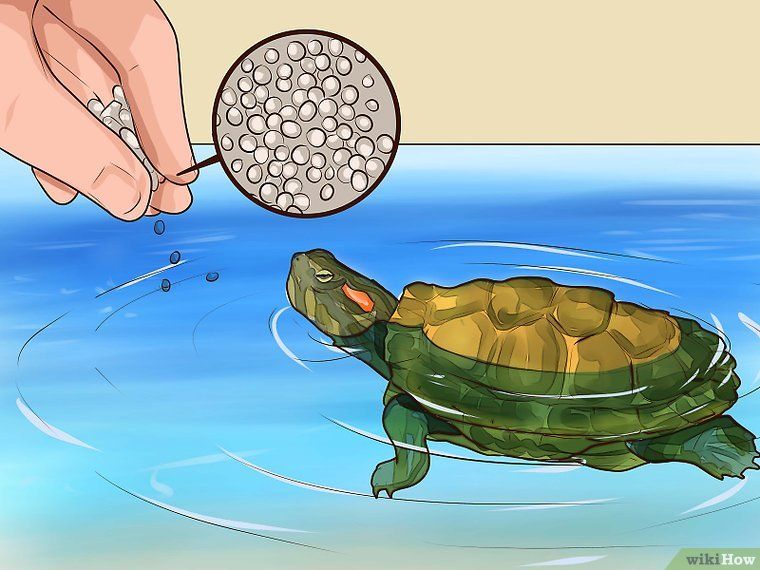 At the same time, the turtle always feels which microelements it lacks at one stage or another of its life path, and it does an excellent job of this task, finding the food that it needs.
At the same time, the turtle always feels which microelements it lacks at one stage or another of its life path, and it does an excellent job of this task, finding the food that it needs.
A turtle can be in a state of searching for scarce food for a long time without harming its health. You can learn a lot of interesting things about these amazing animals by reading the relevant information on the Internet.
What should not be fed to tortoises?
Unfortunately, the list of prohibited products is very extensive and should be read. This list includes cockroaches, crickets, eggshells, potatoes, garlic or onions, various meat products (including sausage and minced meat), bread, milk, various cereals (except for rolled oats), citrus peels, cherries, seeds from any berries . These foods can cause liver disease, which will significantly reduce its life expectancy. Therefore, when starting to draw up her diet, one should take into account the harmful effects of the above products on the turtle's liver and not include them in the diet.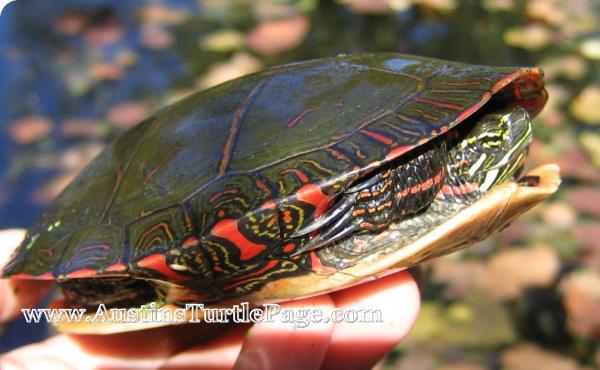
A complete list of prohibited products can be found here.
Turtle nutrition in winter and summer
Despite the fact that the animal is in captivity, it can feel the approach of cold weather, which contributes to a change in taste preferences. In the summer, the turtle eats more juicy foods, then with the advent of a colder season, it prefers soaked hay and less juicy vegetables. In any case, you need to monitor the behavior of the turtle, as well as the fact that it consumes more from food.
In addition to
Being in captivity, the turtle tries to follow its natural instincts and may hibernate. Naturally, this can be facilitated by certain conditions of detention associated with a decrease in ambient temperature within the zone of keeping the animal. It can be not only winter, but also summer hibernation. In nature, turtles hibernate for two main reasons - this is a cold snap or lack of the required amount of food. To prevent this from happening, you should maintain the temperature at an appropriate level, as well as provide the pet with a variety of foods.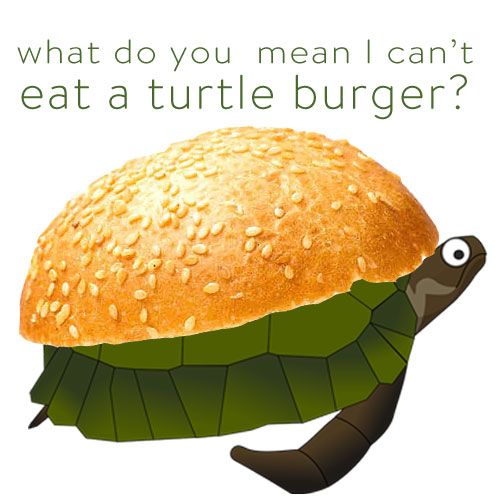 It should always be remembered that even a turtle must sleep under certain conditions, which is extremely difficult to provide for her at home.
It should always be remembered that even a turtle must sleep under certain conditions, which is extremely difficult to provide for her at home.
In order not to risk the health of a small pet, you need to provide it with the appropriate mode, which is on the border of the maximum level. Under such conditions, the turtle is unlikely to think about its hibernation, especially if it has all the necessary products.
It is very important that the heating is similar to the warmth that the turtle felt when it was under the rays of the sun. After all, in the sun, the turtle not only warms itself, but also receives a dose of UV radiation, which helps to better absorb calcium in the body . Without calcium, the turtle will not be able to fully develop and this should always be remembered. Therefore, the presence of a UV lamp is mandatory, as is its inclusion for several hours throughout the day.
From this we can conclude that the future of a small pet depends entirely on who cares for him.